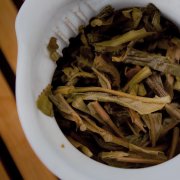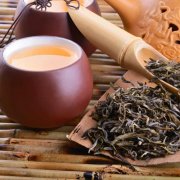How to correctly brew six kinds of tea with boiling water methods and essentials are there flocs that can be drunk normally
Only if your water is good, the tea will be good. Maybe you are a consumer who wants to enjoy the subtle taste of Japanese matcha or Yunnan Pu'er tea. Or you are a coffee shop owner who wants to increase profits (tea is usually the most profitable of all menu items). No matter who you are, if you want your tea to have the best taste, aroma and clarity, you need to pay attention to the purity, hardness, temperature and so on.
Let me share with you what I know about water quality.
The ideal way of cooking
I remember bringing one of my blended teas to Los Angeles to serve a customer, but when I tasted it, I was scared: the tea in the cup had nothing special at all. This question? You guessed it: water.
Being drinkable doesn't mean it's delicious. Fortunately, once you know what you are dealing with, there are many ways to solve the problem. Since I was in Los Angeles, I always put a water test strip in my bag when I was traveling. The test water gave me a baseline for my work.
Here are some criteria you can use to judge water quality:
PH: neutral (between 6-8); brewed tea is slightly acidic, pH 4.5-6.
Hardness: 1-4 tablets is ideal. Hard water can oppress the taste, Yunbing tea.
Total dissolved solids (TDS): 50-150 ppm
Chlorine: 0

Hard water and muddy tea
Hardness is a real problem for tea. Try a brewing bar in San Antonio or Minneapolis, where the water is so hard and high in calcium and magnesium that there is not enough room for leaves to soak.
This is a special problem with iced tea. It should always be transparent in the cup. According to the American Tea Association (the tea Association of the USA), about 80 per cent of tea in the US is chilled. However, when the hardness of the water exceeds seven, the iced tea becomes turbid.

Poor water quality leads to lack of flavor of tea.
But it's not just hardness you need to worry about. Water may be contaminated by chlorine, metals, pH values, etc. Even the season can affect this because water treatment plants change their formulations in cold months. These factors all affect the taste, smell and soaking process.
Unfortunately, if the water contains pollutants from reservoirs or local plants, even the best tea tastes like dirt.
Carbon filters are a good way to remove volatile organic compounds, flagellates, chlorine and anything that may reduce good taste. I suggest going to other restaurants nearby to see what system they are using. Try the water, then ask people around you and learn from local experienced hotel professionals: hotel and restaurant managers, cafe employees, etc.
Of course, it's no use tasting your tea if you don't know what you should experience in the cup. Here are some basic guidelines. Keep in mind that this is a very general list because there are thousands of tea varieties.)
White tea: cucumber, honeysuckle and general delicate shape
Green tea: grass tea, butter tea, edamame tea, pea tea, mung bean tea, plant tea
Jadeite oolong tea: orchid, spinach, gardenia, kale, butter, melon
Amber Oolong Tea: smooth on the palate, with aromas of honey, apricot, wood, nuts, peaches and roses
Darjeeling: fresh, with aromas of grape, citrus and musk
Ceylon: Wood, fruit, menthol, raisins, crisp, malt, citrus
Assam: strong aromas of wine, grain, wood, caramel, wheat, barley, honey and malt

Bitter tea is hard to swallow.
But here's a tip: if your tea tastes bitter, don't blame the water. The problem may be the use of shoddy tea or soaking too hot or for too long.
Target temperature and tea brewing time:
White tea: 76 °C ram 169 °F, soak for 1-2 minutes
Green tea: 76-82 °C / 169-180 °F, soak for 1-3 minutes
Oolong tea: 90 °C ramp 194 °F, soak for 2-3 minutes
Black tea: 97-100 °C / 207-212 °F, soak for 3-5 minutes

Knowing your water is as important as knowing your tea. Buy water test tools and test strips. Check your local water hardness level. If necessary, study filtering techniques.
Important Notice :
前街咖啡 FrontStreet Coffee has moved to new addredd:
FrontStreet Coffee Address: 315,Donghua East Road,GuangZhou
Tel:020 38364473
- Prev

What is the difference between black tea, oolong tea, green tea, white tea, yellow tea and Pu'er tea?
According to Mary Lew and Robert J. Hayes in the Tea enthusiast's Handbook: the World's Best Guide to Tea, there are more than 20,000 different kinds of tea in the world. But if you are interested in learning about specialty teas, you can start with the following six teas. So make your own cup and get ready to learn the difference between matcha, oolong tea and English breakfast. Six major types of tea, however, before you open
- Next

What is oolong tea? What kind of tea does Tieguanyin belong to? What are the varieties and producing areas of oolong tea?
What is oolong tea? Oolong tea is considered to be one of the most precious teas because of its complex processing technology. Complex tastes evolve with each mouthful. Oolong tea is produced in Fujian in southern China.
Related
- Beginners will see the "Coffee pull flower" guide!
- What is the difference between ice blog purified milk and ordinary milk coffee?
- Why is the Philippines the largest producer of crops in Liberia?
- For coffee extraction, should the fine powder be retained?
- How does extracted espresso fill pressed powder? How much strength does it take to press the powder?
- How to make jasmine cold extract coffee? Is the jasmine + latte good?
- Will this little toy really make the coffee taste better? How does Lily Drip affect coffee extraction?
- Will the action of slapping the filter cup also affect coffee extraction?
- What's the difference between powder-to-water ratio and powder-to-liquid ratio?
- What is the Ethiopian local species? What does it have to do with Heirloom native species?

